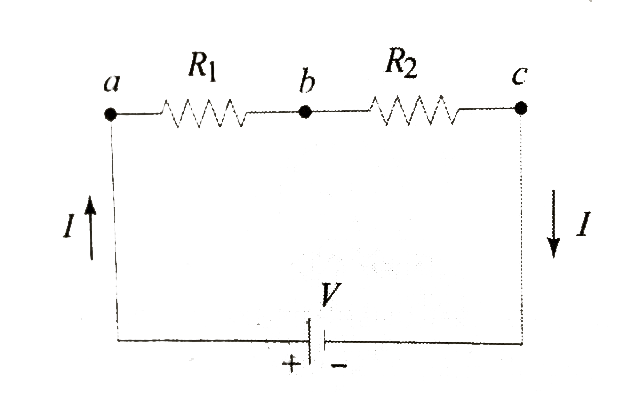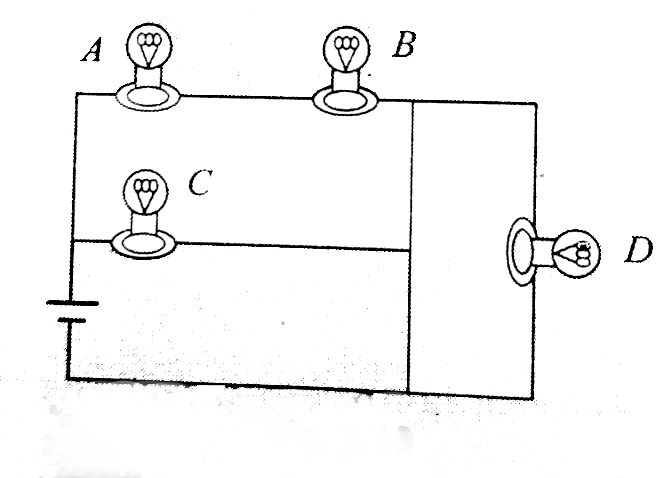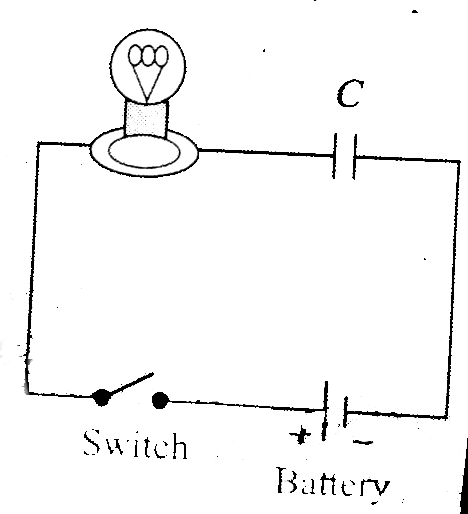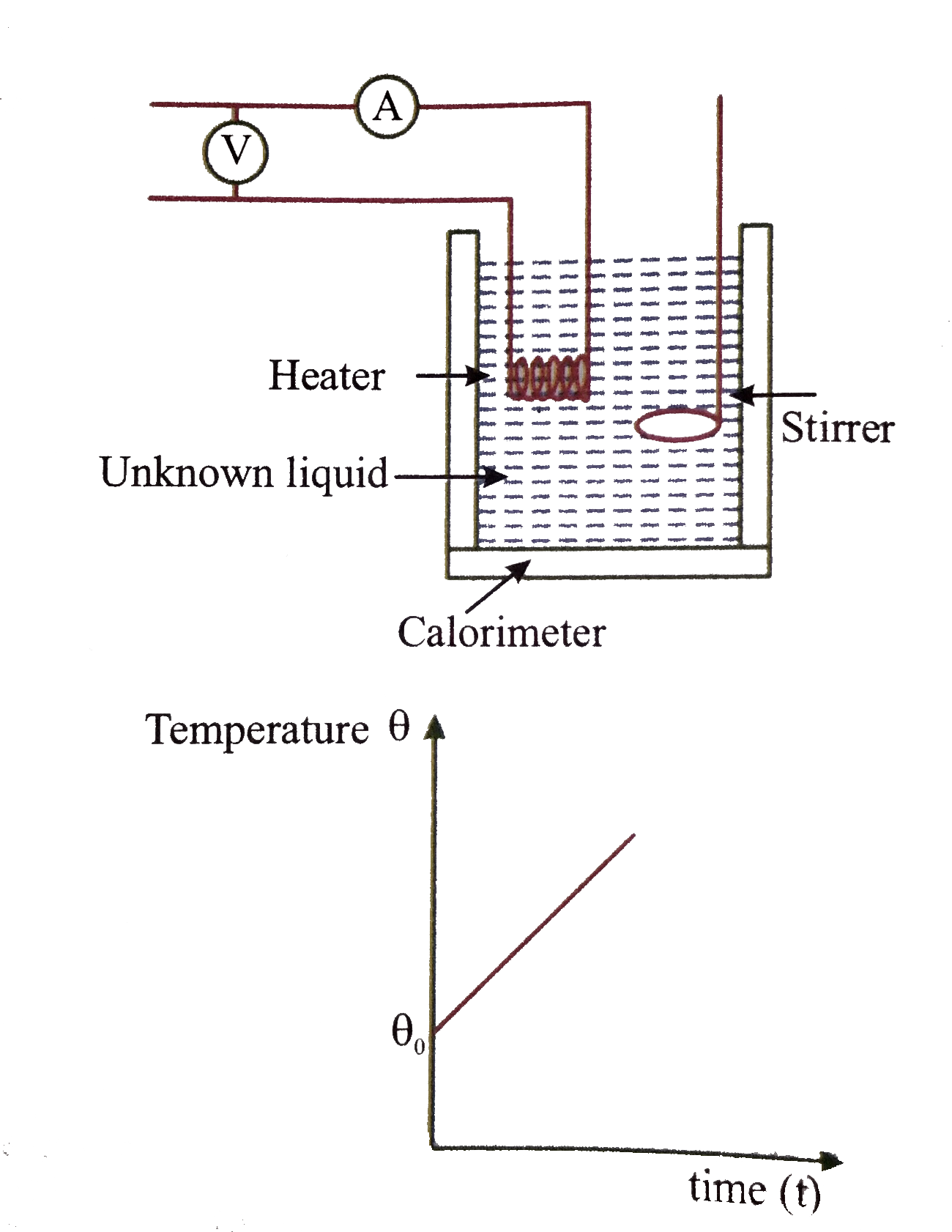Statement - should street lights be switched off after mid-night? Arguments 1 No,statistics show that crime and accidents increase if street lights are switched off. ll Yes, few vehicles ply after mid-night,expensive electricity will be wasted.
if only argument I is strong
If only Arguments II is strong
If both Arguments I and II are strong
If neither Argument I nor Ii is strong
Step by step video & image solution for Statement - should street lights be switched off after mid-night? Arguments 1 No,statistics show that crime and accidents increase if street lights are switched off. ll Yes, few vehicles ply after mid-night,expensive electricity will be wasted. by Maths experts to help you in doubts & scoring excellent marks in Class 14 exams.
Similar Questions
Consider the given statement to be true even if it seems to be at variance from commonly known facts. You have to decide which of the given arguments, if any, is a strong agrument? Statement Should speed breakers be banned?
Arguments
I. yes, data shows that number of accidents increase after putting the speed breakers.
II No, It teach fast drivers a lesson. (A) If only Argument I is strong (B) If only Argument II is strong (C) If both Argument I and II are strong (D) if neither Argument I nor II is strongView Solution(a) what is the rate at which energy being delivered to a light bulb higher : just after it is turned on , the glow of the filament is increasing , or after it has been on for a few seconds and the glow is steady ?
(b) IF a piece of wire is used to connect points bandc in Fig. 7.9, does the brightness of bulb R1 increase , decrease or stay constant ? What happens to the brightness of bulb R2 ? (I1=I2=I)
(c) Compare the brightness of four identical light bulbs in Fig.7.10. What happens if the bulb A fails so that it cannot conduct ? What if C fails ? What if D fails?
(d) If electric power is transmitted over long distances, the resistance of the wires becomes significant. Why ? Which mode of transmission would result in less energy losss: high current and low voltage or low current and high voltage ? Discuss.
(e) In Fig.7.11, describe wha happens to the light bulb after the switch is closed . Assume the capacitor has a large capacitance and is initially uncharged.
(f) Astuident claims that a second light bulb in series is less bright than the first , because the first bulb uses up some of the current . How would you respond to this statement ?
(g) If you were to design an electeric heater using nichrome wire as the heating element , what parameters of the wire would you vary to meet a specific power output , sch as 1000W?


 View Solution
View Solution
Knowledge Check
- Question 1 - Select One
Statement: Fluresence is the emission of light by sucstances after absorbing light.
Explanation: It may continue for appreciable time after the exciting light is switched off.A(a) S is correct but E is wrongB(b) S is wrong but E is correctC(c ) Both S and E are correct and E is correct explanation of SD(d) Both S and E are correct but E is not correct explanation of S. - Question 2 - Select One
Figure shows an electrical calorimeter to determine specific heat capacity of an unknown liquid, First of all, the mass of empty calorimeter (a copper container) is measured and suppose it is m1. Then the unknown liquid is poured in it. Now the combined mass of calorimeter+liquid system is measured and let it be m2. So the mass of liquid is (m2−m1). Initially both were at room temperature (θ0).
Now a heater is immeresed in if for time interval t. The voltage drop across the heater is V and current passing through it is I. Due to heat supplied, the temperature of both the liquid and calorimeter will rise simultaneously. After tsec, heater was switched off, and final temperature is θr. If there is no heat loss to surroundings. Heat supplied by the heater=Heat absorbed by the liquid+heat absorbed by the calorimeter (VI)t=(m2−m1)S1(θf−θ0)+m1Sc(θf−θ0)
The specific heat of the liquid S1=(VI)tθf−θ0−m1Sc(m2−m1)

Radiation correction: There can be heat loss to environment. To compensate this loss, a correction is introduced.
Let the heater was on for tsec, and then it is switched off. Now the temperature of the mixture falls due to heat loss to environment. The temperature of the mixture is measured t/2sec. after switching off. Let the fall in temperature during this time is varepsilon
Now the corrected final temperature is taken as θf=θf+ɛ
In this experiment voltage across the heater is 100.0V and current is 10.0A, and heater was switched on for t=700.0sec. Initially all elements were at room temperature θ∘=10.0∘C and final temperature was measured as θf=73.0∘C.
Mass of empty calorimeter ws 1.0kg and the combined mass of calorimeter + liquid is 3.0kg. The specific heat capacity of the calorimeter =3.0×103J/kg∘C. The falls in temperature 350 second after switching off the heater was 7.0∘C. Find the specific heat capacity of the unknown liquid in proper significant figures.A3.5×103J/kg∘CB3.50×103J/kg∘CC4.0×103J/kg∘CD3.500×103J/kg∘C - Question 3 - Select One
Figure shows an electrical calorimeter to determine specific heat capacity of an unknown liquid, First of all, the mass of empty calorimeter (a copper container) is measured and suppose it is m1. Then the unknown liquid is poured in it. Now the combined mass of calorimeter+liquid system is measured and let it be m2. So the mass of liquid is (m2−m1). Initially both were at room temperature (θ0).
Now a heater is immeresed in if for time interval t. The voltage drop across the heater is V and current passing through it is I. Due to heat supplied, the temperature of both the liquid and calorimeter will rise simultaneously. After tsec, heater was switched off, and final temperature is θr. If there is no heat loss to surroundings. Heat supplied by the heater=Heat absorbed by the liquid+heat absorbed by the calorimeter (VI)t=(m2−m1)S1(θf−θ0)+m1Sc(θf−θ0)
The specific heat of the liquid S1=(VI)tθf−θ0−m1Sc(m2−m1)

Radiation correction: There can be heat loss to environment. To compensate this loss, a correction is introduced.
Let the heater was on for tsec, and then it is switched off. Now the temperature of the mixture falls due to heat loss to environment. The temperature of the mixture is measured t/2sec. after switching off. Let the fall in temperature during this time is ɛ
Now the corrected final temperature is taken as θf=θf+ɛ
If mass and specific heat capacity of calorimeter is negligible, what would be maximum permissible error in Sl. Use the date mentioned below.
m1→, Sl→0, m2=1.00kg,
V=10.0V, I=10.0A,
t=1.00×102sec, θ0=15∘C,
Corrected θ1=65∘CA4%B5%C8%D12%
Figure shows an electrical calorimeter to determine specific heat capacity of an unknown liquid, First of all, the mass of empty calorimeter (a copper container) is measured and suppose it is m1. Then the unknown liquid is poured in it. Now the combined mass of calorimeter+liquid system is measured and let it be m2. So the mass of liquid is (m2−m1). Initially both were at room temperature (θ0).
Now a heater is immeresed in if for time interval t. The voltage drop across the heater is V and current passing through it is I. Due to heat supplied, the temperature of both the liquid and calorimeter will rise simultaneously. After tsec, heater was switched off, and final temperature is θr. If there is no heat loss to surroundings. Heat supplied by the heater=Heat absorbed by the liquid+heat absorbed by the calorimeter (VI)t=(m2−m1)S1(θf−θ0)+m1Sc(θf−θ0)
The specific heat of the liquid S1=(VI)tθf−θ0−m1Sc(m2−m1)

Radiation correction: There can be heat loss to environment. To compensate this loss, a correction is introduced.
Let the heater was on for tsec, and then it is switched off. Now the temperature of the mixture falls due to heat loss to environment. The temperature of the mixture is measured t/2sec. after switching off. Let the fall in temperature during this time is ɛ
Now the corrected final temperature is taken as θf=θf+ɛ
If the system were losing heat according to Newton's cooling law, the temperature of the mixture would change with time according to (while heater was on)View SolutionInstructions
Read the following passage and answer the questions given after it. Passage:
By the 19205 the improvements in street lighting, domestic lighting and a surge in cofiee houses - which were sometimes open all night — was complete. As the night became a place for legitimate activity, the length of time people could dedicate to rest dwindled.” Evening's Empire puts forward an account of how this happened. "Associations with night before the 17th Century were not good,” it says. “The night was a place populated by people of disrepute - criminals, prostitutes and drunks. Even the wealthy, who could afford candlelight, had better things to spend their money on. There was no prestige or social value associated with staying up all night."
That changed in the wake of the Reformation and the counter- Reformation. Protestants and Catholics became accustomed to holding secret services at night. If earlier the night had belonged to reprobates, now respectable people became accustomed to exploiting the hours of darkness. This trend migrated to the social sphere too, but only for those who could afford to live by candlelight. With the advent of street lighting, however, socializing at night began to filter down through the classes.
In 1667, Paris became the first city in the world to light its streets, using wax candles in glass lamps. It was followed by Lille in the same year and Amsterdam two years later, where a much more efficient oilpowered lamp was developed. A small city like Leipzig in central
Germany employed 100 men to tend to 700 lamps. London didn‘t join their ranks until 1684 but by the end of the century, more than 50 of Europe's major tovms and cities were lit at night. Night became fashionable and spending hours lying in bed was considered a waste of time.
"People were becoming increasingly time-conscious and sensitive to efficiency, certainly before the 19th Century," says Roger Ekirch. "But the industrial revolution intensified that attitude by leaps and bounds." Strong evidence of this shifting attitude is contained in a medical journal from 1829 which urged parents to force their children out of a pattern of first and second sleep. "If no disease or accident there intervene, they will need no further repose than that obtained in their first sleep.”
Today, most people seem to have adapted quite well to the eight-hour sleep, but Ekirch believes many sleeping problems may have roots in the human body’s natural preference for segmented sleep as well as the ubiquity of artificial light. This could be the root of a condition called sleep maintenance insomnia, where people wake during the night and have trouble getting back to sleep, he suggests. The condition first appears in literature at the end of the 19th Century, at the same time as accounts of segmented sleep disappear.
Which of the following phenomena helped classdivision vanish vis-a-vis nightlife?View SolutionInstructions
Read the following passage and answer the questions given after it. Passage:
By the 19205 the improvements in street lighting, domestic lighting and a surge in cofiee houses - which were sometimes open all night — was complete. As the night became a place for legitimate activity, the length of time people could dedicate to rest dwindled.” Evening's Empire puts forward an account of how this happened. "Associations with night before the 17th Century were not good,” it says. “The night was a place populated by people of disrepute - criminals, prostitutes and drunks. Even the wealthy, who could afford candlelight, had better things to spend their money on. There was no prestige or social value associated with staying up all night."
That changed in the wake of the Reformation and the counter- Reformation. Protestants and Catholics became accustomed to holding secret services at night. If earlier the night had belonged to reprobates, now respectable people became accustomed to exploiting the hours of darkness. This trend migrated to the social sphere too, but only for those who could afford to live by candlelight. With the advent of street lighting, however, socializing at night began to filter down through the classes.
In 1667, Paris became the first city in the world to light its streets, using wax candles in glass lamps. It was followed by Lille in the same year and Amsterdam two years later, where a much more efficient oilpowered lamp was developed. A small city like Leipzig in central
Germany employed 100 men to tend to 700 lamps. London didn‘t join their ranks until 1684 but by the end of the century, more than 50 of Europe's major tovms and cities were lit at night. Night became fashionable and spending hours lying in bed was considered a waste of time.
"People were becoming increasingly time-conscious and sensitive to efficiency, certainly before the 19th Century," says Roger Ekirch. "But the industrial revolution intensified that attitude by leaps and bounds." Strong evidence of this shifting attitude is contained in a medical journal from 1829 which urged parents to force their children out of a pattern of first and second sleep. "If no disease or accident there intervene, they will need no further repose than that obtained in their first sleep.”
Today, most people seem to have adapted quite well to the eight-hour sleep, but Ekirch believes many sleeping problems may have roots in the human body’s natural preference for segmented sleep as well as the ubiquity of artificial light. This could be the root of a condition called sleep maintenance insomnia, where people wake during the night and have trouble getting back to sleep, he suggests. The condition first appears in literature at the end of the 19th Century, at the same time as accounts of segmented sleep disappear.
Which of the following is NOT true regarding the nights in 19205 in Europe?View SolutionInstructions
Read the following passage and answer the questions given after it. Passage:
By the 19205 the improvements in street lighting, domestic lighting and a surge in cofiee houses - which were sometimes open all night — was complete. As the night became a place for legitimate activity, the length of time people could dedicate to rest dwindled.” Evening's Empire puts forward an account of how this happened. "Associations with night before the 17th Century were not good,” it says. “The night was a place populated by people of disrepute - criminals, prostitutes and drunks. Even the wealthy, who could afford candlelight, had better things to spend their money on. There was no prestige or social value associated with staying up all night."
That changed in the wake of the Reformation and the counter- Reformation. Protestants and Catholics became accustomed to holding secret services at night. If earlier the night had belonged to reprobates, now respectable people became accustomed to exploiting the hours of darkness. This trend migrated to the social sphere too, but only for those who could afford to live by candlelight. With the advent of street lighting, however, socializing at night began to filter down through the classes.
In 1667, Paris became the first city in the world to light its streets, using wax candles in glass lamps. It was followed by Lille in the same year and Amsterdam two years later, where a much more efficient oilpowered lamp was developed. A small city like Leipzig in central
Germany employed 100 men to tend to 700 lamps. London didn‘t join their ranks until 1684 but by the end of the century, more than 50 of Europe's major tovms and cities were lit at night. Night became fashionable and spending hours lying in bed was considered a waste of time.
"People were becoming increasingly time-conscious and sensitive to efficiency, certainly before the 19th Century," says Roger Ekirch. "But the industrial revolution intensified that attitude by leaps and bounds." Strong evidence of this shifting attitude is contained in a medical journal from 1829 which urged parents to force their children out of a pattern of first and second sleep. "If no disease or accident there intervene, they will need no further repose than that obtained in their first sleep.”
Today, most people seem to have adapted quite well to the eight-hour sleep, but Ekirch believes many sleeping problems may have roots in the human body’s natural preference for segmented sleep as well as the ubiquity of artificial light. This could be the root of a condition called sleep maintenance insomnia, where people wake during the night and have trouble getting back to sleep, he suggests. The condition first appears in literature at the end of the 19th Century, at the same time as accounts of segmented sleep disappear.
Which is the most significant cause of sleep maintenance insomnia?View SolutionInstructions
Read the following passage and answer the questions given after it. Passage:
By the 19205 the improvements in street lighting, domestic lighting and a surge in cofiee houses - which were sometimes open all night — was complete. As the night became a place for legitimate activity, the length of time people could dedicate to rest dwindled.” Evening's Empire puts forward an account of how this happened. "Associations with night before the 17th Century were not good,” it says. “The night was a place populated by people of disrepute - criminals, prostitutes and drunks. Even the wealthy, who could afford candlelight, had better things to spend their money on. There was no prestige or social value associated with staying up all night."
That changed in the wake of the Reformation and the counter- Reformation. Protestants and Catholics became accustomed to holding secret services at night. If earlier the night had belonged to reprobates, now respectable people became accustomed to exploiting the hours of darkness. This trend migrated to the social sphere too, but only for those who could afford to live by candlelight. With the advent of street lighting, however, socializing at night began to filter down through the classes.
In 1667, Paris became the first city in the world to light its streets, using wax candles in glass lamps. It was followed by Lille in the same year and Amsterdam two years later, where a much more efficient oilpowered lamp was developed. A small city like Leipzig in central
Germany employed 100 men to tend to 700 lamps. London didn‘t join their ranks until 1684 but by the end of the century, more than 50 of Europe's major tovms and cities were lit at night. Night became fashionable and spending hours lying in bed was considered a waste of time.
"People were becoming increasingly time-conscious and sensitive to efficiency, certainly before the 19th Century," says Roger Ekirch. "But the industrial revolution intensified that attitude by leaps and bounds." Strong evidence of this shifting attitude is contained in a medical journal from 1829 which urged parents to force their children out of a pattern of first and second sleep. "If no disease or accident there intervene, they will need no further repose than that obtained in their first sleep.”
Today, most people seem to have adapted quite well to the eight-hour sleep, but Ekirch believes many sleeping problems may have roots in the human body’s natural preference for segmented sleep as well as the ubiquity of artificial light. This could be the root of a condition called sleep maintenance insomnia, where people wake during the night and have trouble getting back to sleep, he suggests. The condition first appears in literature at the end of the 19th Century, at the same time as accounts of segmented sleep disappear.
In which city were 100 men employed to tend to 700 lamps?View Solution

